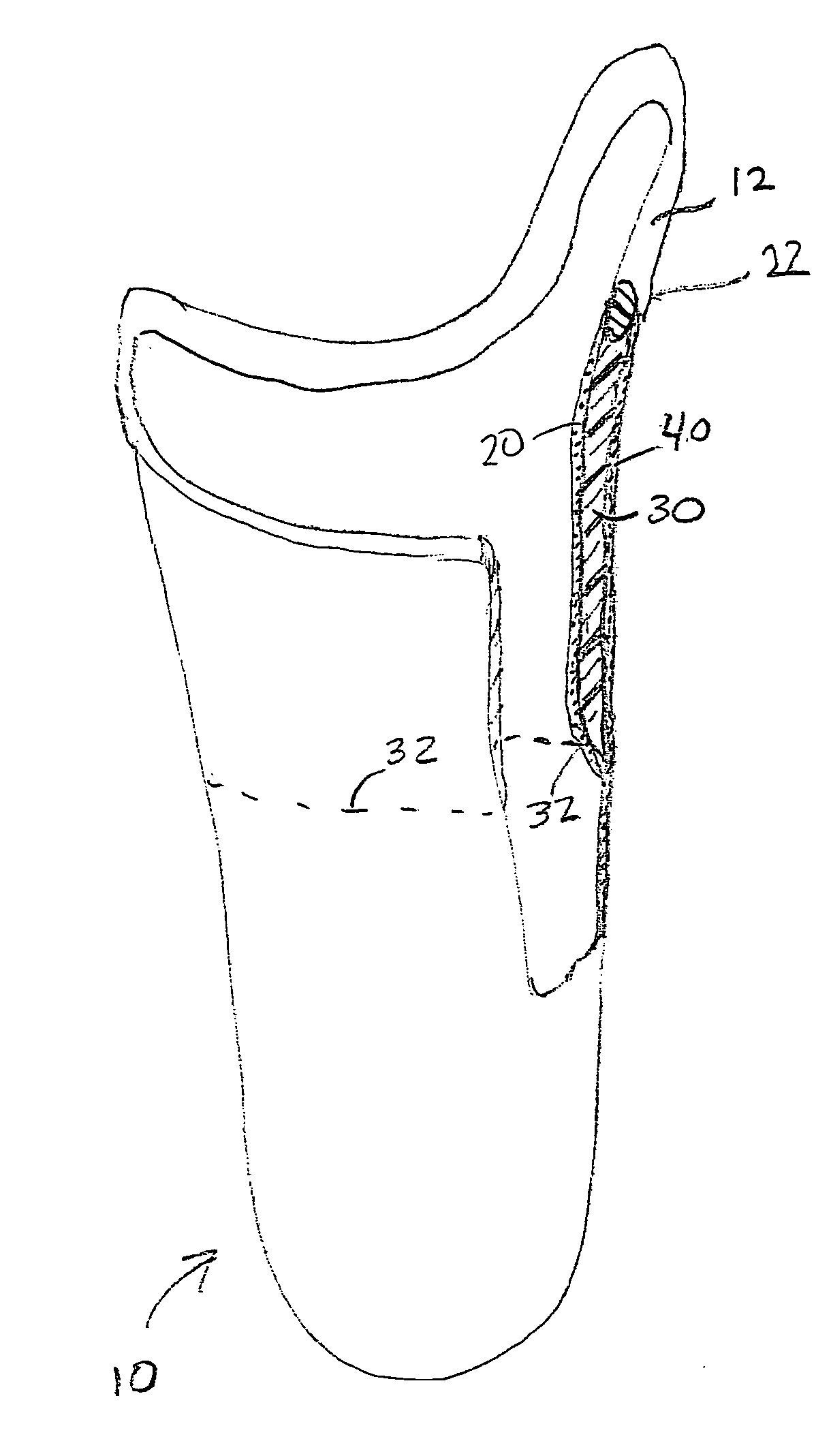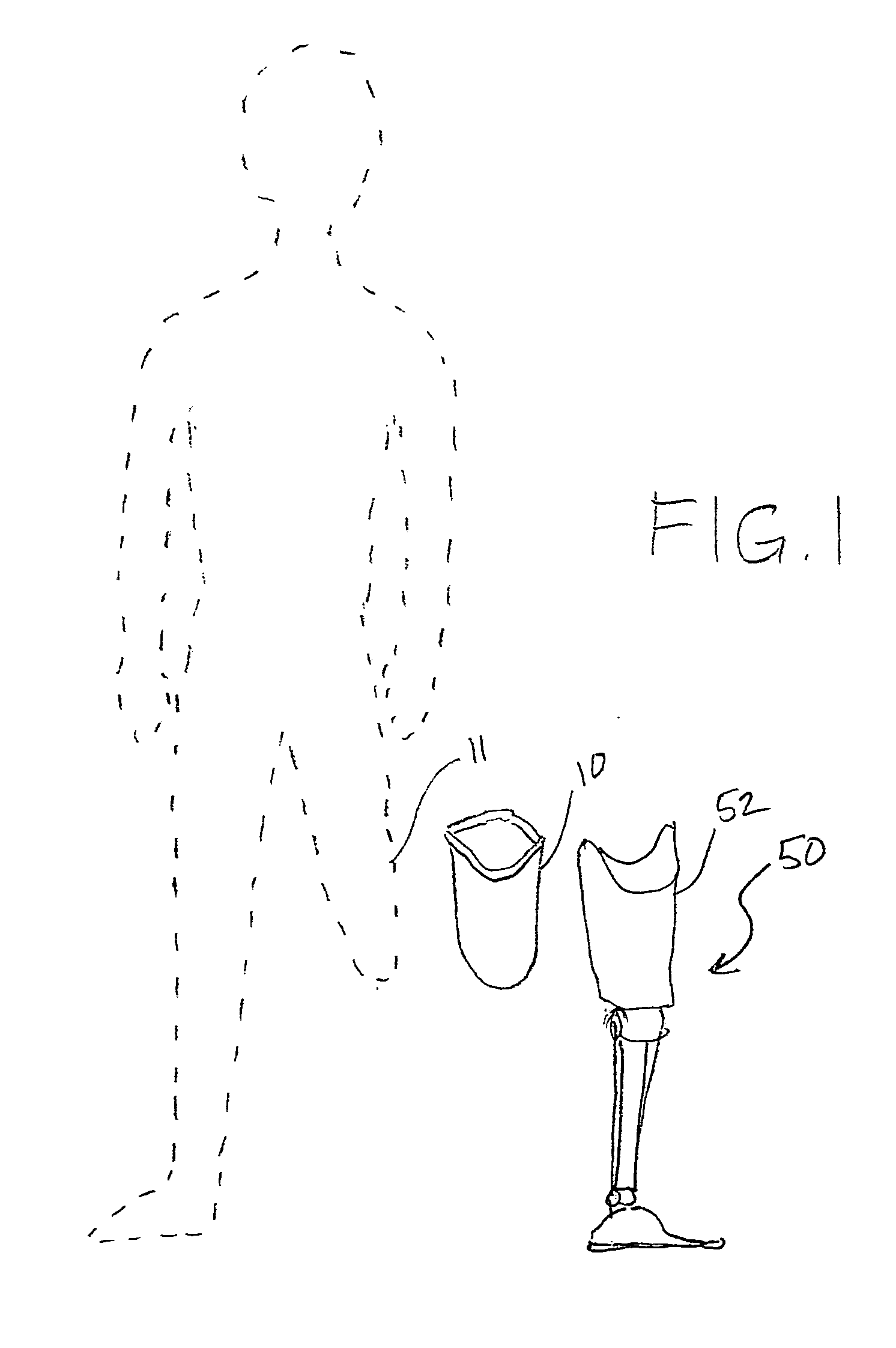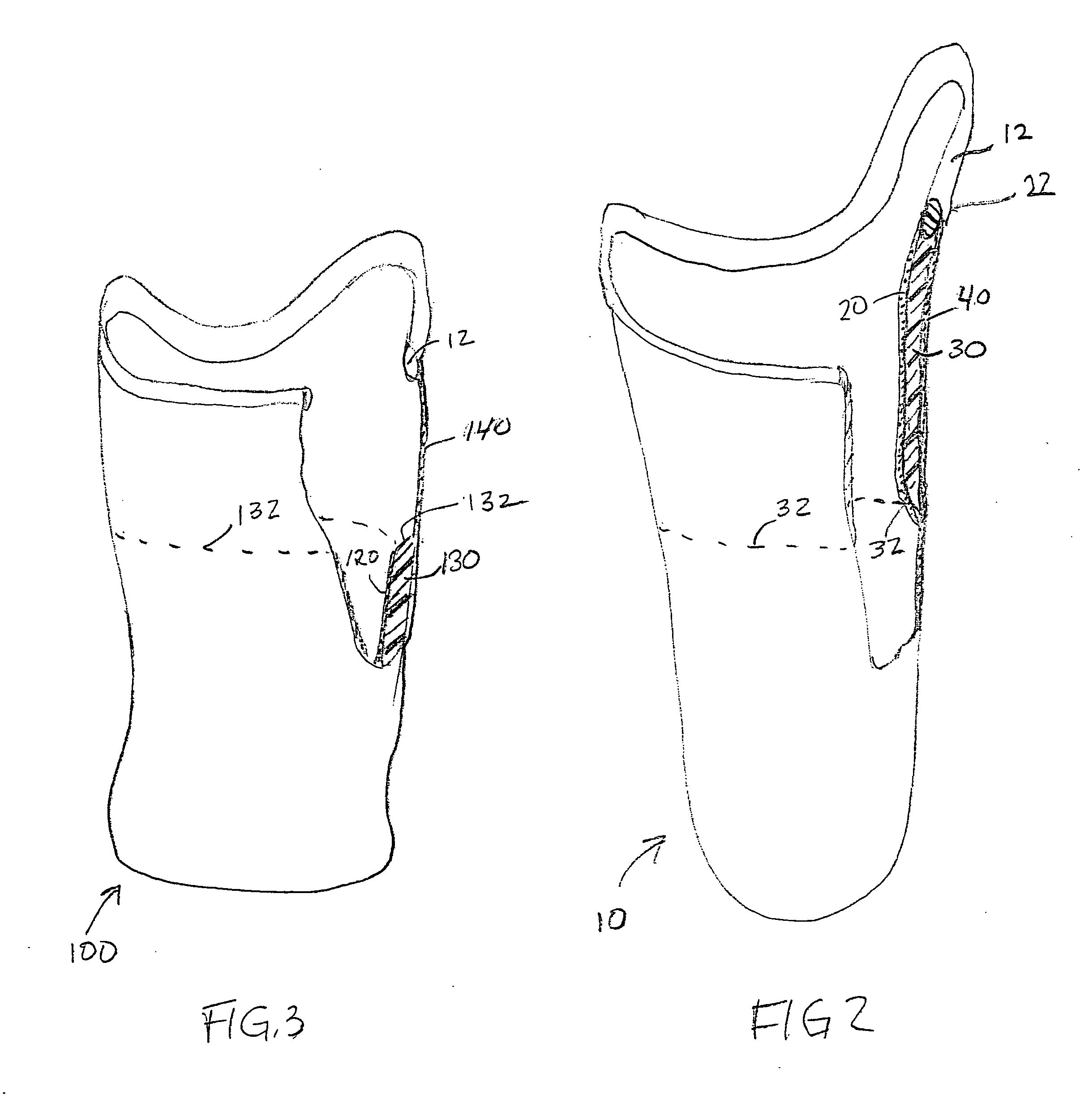Liner for use with prosthetic devices
- Summary
- Abstract
- Description
- Claims
- Application Information
AI Technical Summary
Benefits of technology
Problems solved by technology
Method used
Image
Examples
Embodiment Construction
[0015] Referring initially to FIG. 1, an amputee who has had a limb partially removed will typically have a stump or “residual limb”11, to which a prosthesis for the missing limb part can be attached. While FIG. 1 shows a transfemoral amputee and the discussion below may be presented in terms of a prosthetic leg, it will be understood that other embodiments of the present invention can be used advantageously in any partial limb amputation, including but not limited to transfemoral and transtibial amputations. In FIG. 1, the liner 10 and the prosthesis 50 are shown separated from the wearer. Prosthesis 50 includes a socket 52, which is typically rigid and custom-shaped to conform generally to the outer surface of the partial limb 11.
[0016] Regardless of whether a prosthesis is adapted to be used on a TF amputee, a BK amputee, or in place of a partially amputated arm instead of a leg, a liner used in conjunction with the prosthesis will be shaped to conform to the partial limb. As su...
PUM
 Login to View More
Login to View More Abstract
Description
Claims
Application Information
 Login to View More
Login to View More - R&D Engineer
- R&D Manager
- IP Professional
- Industry Leading Data Capabilities
- Powerful AI technology
- Patent DNA Extraction
Browse by: Latest US Patents, China's latest patents, Technical Efficacy Thesaurus, Application Domain, Technology Topic, Popular Technical Reports.
© 2024 PatSnap. All rights reserved.Legal|Privacy policy|Modern Slavery Act Transparency Statement|Sitemap|About US| Contact US: help@patsnap.com










